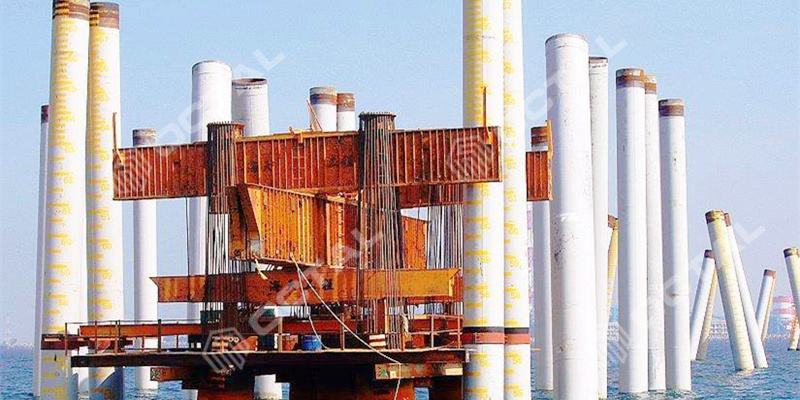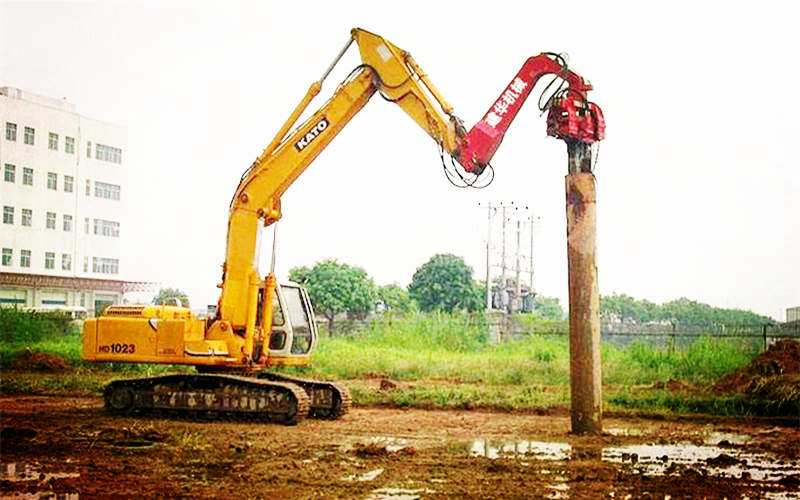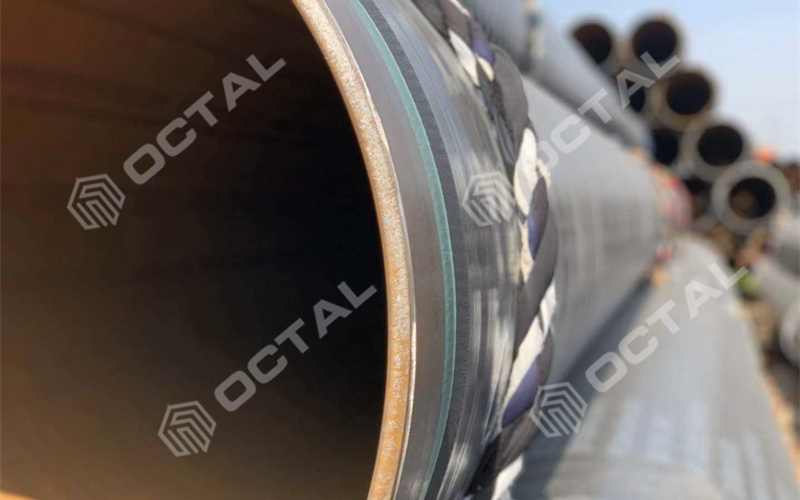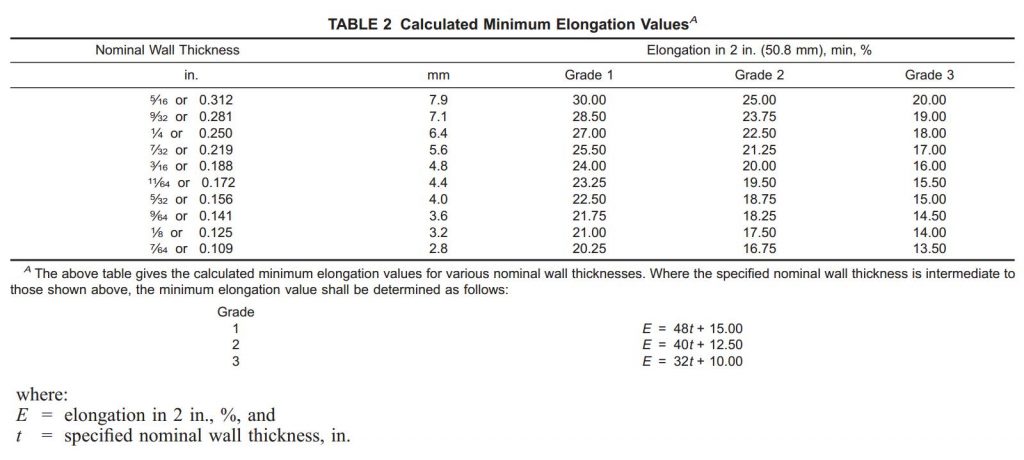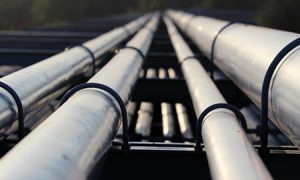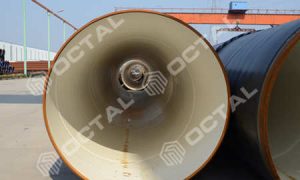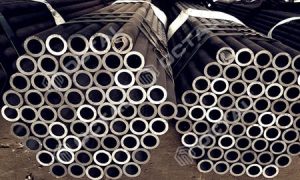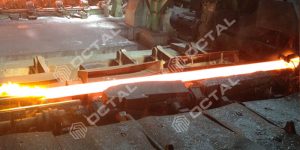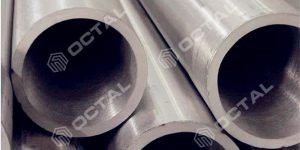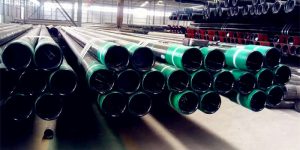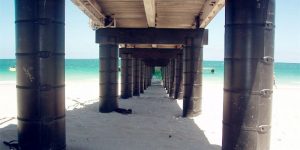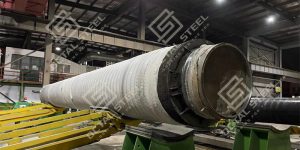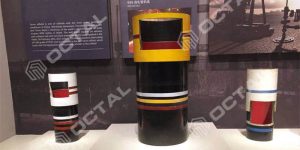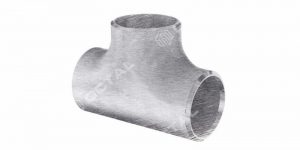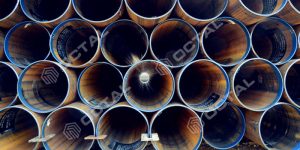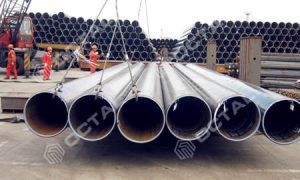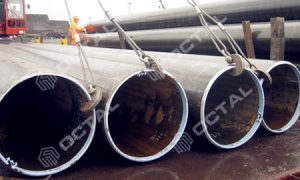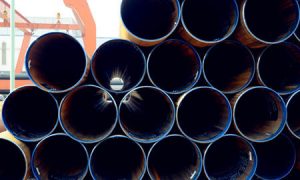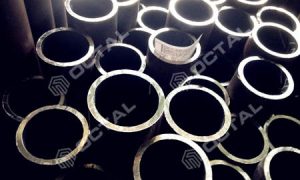Steel Pipe Pile, Pipe Piling, Piling Pipe – Foundation Material
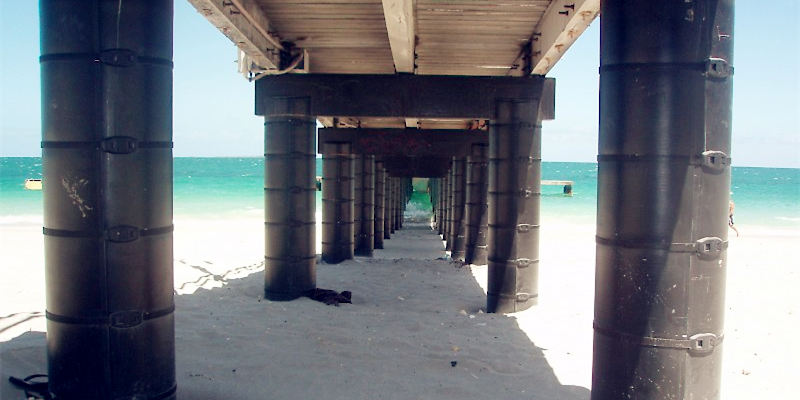
A steel pipe pile is a type of steel piling material that is commonly used to support and stabilize the foundation of a building. It is typically made of carbon steel and can be manufactured in seamless or welded forms, such as SSAW or LSAW. Therefore, a pipe pile serves as a structural construction material.
Pipe pile applications
Steel pipe piles are highly recommended as the preferred piling material for seaport constructions and yard buildings. They have been widely used in sea works or marine works to establish robust foundations. Additionally, they are commonly employed in various other applications, including under buildings, bridges, and structural constructions. Further details are outlined below:
Onshore and offshore constructions
Marine foundations / constructions
Tower building
Railway, highway construction
Dock yard construction
Sea works, marine works
Oil and gas filed foundations
Structural support in special buildings
etc.
About steel pile
Steel pile includes:
Pipe Pile – Piling Pipe – Pipe Piling
Sheet Pile
H-beam pile
Screw pile
Disc pile
All these materials are made of iron steel and worked for piling under the buildings.
How does steel pile pipe work
Steel piles are utilized in situations where the soil beneath a building is loosely packed, and there are concerns about the long-term stability of the structure. By using a pipe pile, the weight is evenly distributed and extends deeper into the Earth, where the soil is more compact. This proves to be highly advantageous in the construction of super-large buildings, where the soil alone cannot provide the necessary support.
On the other hand, in situations where the land area is small and does not give enough room for spread footers or foundations, the forcing buildings will be used so that there is a better level of stability on the ground.
Common forms of pipe piling
The most commonly used forms of pile pipes are typically large in diameter, ranging from 16 inches to 60 inches. These heavy-duty steel pipes can be manufactured using seamless, longitudinal welded (LSAW), or spiral welded (SSAW) techniques. Depending on the soil environments, the pipes may be coated with zinc (galvanized), FBE, or 3LPE coatings. This helps to provide moisture resistance and corrosion resistance, enhancing their durability.
Pipe Pile in LSAW welded types
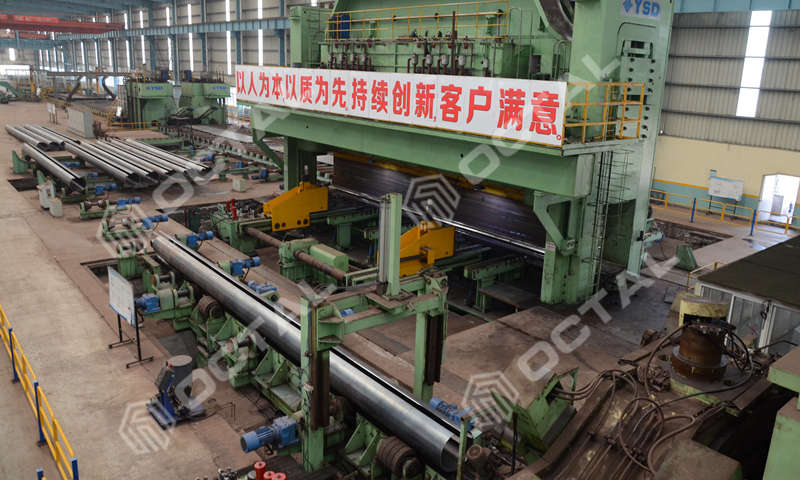
Pipe Piling manufactured in SSAW/HSAW spiral welded
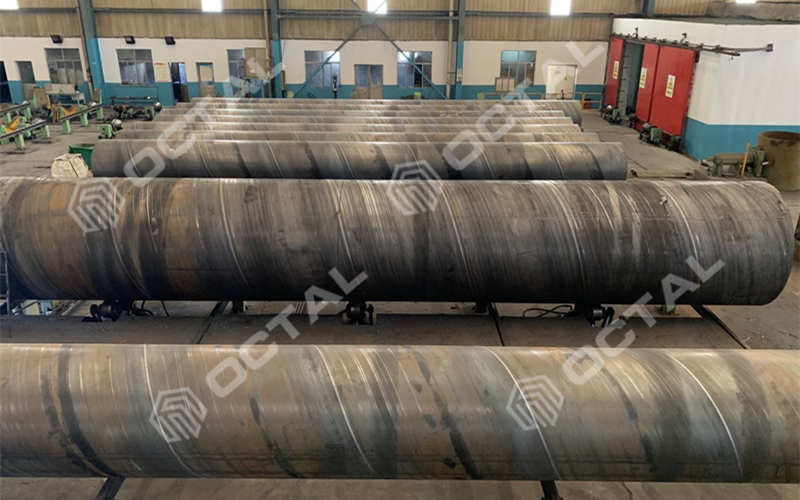
Open-ended pipes are typically used when there is a specific requirement for support. However, in other cases, these pipes can be capped with steel plates or rock shoes to create closed-ended pilings. Installers can then fill these closed-ended pilings with concrete and reinforced steel to enhance the stability and strength of the foundation. This approach is commonly employed to increase the overall durability and resilience of the structure.
Pipe pile installation
In order to install a pipe pile, a pile driver is required. Pile drivers are machines that are capable of driving the piles deep into the ground using hydraulic systems that can exert high levels of force. When steel piles are driven directly into the soil, without the need for drilling a hole, the soil itself provides the necessary support for stabilizing the pipe. As the pipe is driven into the ground, the soil is displaced, creating increased friction and pressure from all sides, which helps to firmly hold the pipe in place.
Methods to place the piling pipe
Depending upon the load of the building at different locations, engineers and installers shall decide the placement of the pipe. When there is a very heavy load, typically in the case of industrial equipment, the pile pipe must be placed directly under it, so that it offers enough support.
If the load distribution of the building is even, there might be a concrete pile cap that is used for supporting the building, which allows the piling pipe for equal placement and serves as a single assembly connector for the entire foundation.
Choosing the right steel pile pipe for piling
The pipe piling must be chosen carefully depending on the forces of the building, the prevailing conditions of the soil and building codes of that area. The placement of piles is determined by a geotechnical engineer. The structural engineer then decides on the piling material, and size of the pipe piling according to the depth which they must reach. In cases where a single piling pipe does not reach the required depth, piles are joined using splicing sleeves or butt welds to make them longer.
Open end and close end pipe piling
Based on the different soil environments and requirements, Pipe piling could be divided into open-end pile and close-end pile pipe.
Open-end pile pipe (Unplugged pipe pile)
The driving end of this type of pipe pile is left open, which means there is no driving point. It is usually used to go through the rock or the tough area. When the open end of piling pipe sinks in underground, we can remove the soil through water jet or compress the air. Meanwhile, as the pile pipe drives to a certain depth, they will be fully cleaned and filled with concrete.
Close-end pile pipe (Plugged pipe pile)
The driving end of this type of pipe pile is left closed. By welding a conical profile steel or cast-iron steel to the pipe end, we can close the pipe piling end. After driving works, the internal of the pipe is filled with concrete.
For closed-end piles, the driving end of each piling pipe is closed by welding a bottom steel (conical steel or cast-iron rock shoe) to the pipe end. Also, after driving, the hollow space inside the pipe is normally filled with concrete.
Both open-ended and close-ended pipe piles can be driven into the ground. When using close-ended piles with plates, concrete is utilized to enhance the pile’s strength. However, instead of investing in plates, rebar, and concrete, it may be more cost-effective to allocate the same resources towards a thicker and larger pile. Pipe piles typically range in length from a few inches to a few feet in diameter, providing flexibility in creating piles of various sizes as needed.
Pipe piling size
Normally, piling pipe OD ranges from 250 mm (10 inch) to 1500 mm (60 inch), thickness from 8 mm to 25 mm.
Referred standard specification of pipe pile
The most widely used standard for pipe pile is ASTM A252. Grades in three levels, Gr 1, Gr 2, and Gr 3.
Chemical Composition of ASTM A252: The steel only defines no more than 0.050 % phosphorous.
Elongations:
ASTM A252
This specification is generally for wall steel pipes that are cylindrical in shape. The steel cylinder acts like a load-carrying member for the cast-in-place piles of concrete.
Types of Manufacturing for pipe piling
Pipe piling is generally manufactured using seamless, resistance welding, fusion welding, flash welding with seams being longitudinal, helical. It also specifies the tensile requirements, minimum values and the common size and weight based on the values.
Advantages of steel pipe pile
One of the major advantages of steel pipe piles is their ability to provide robust support for underground foundations. This is particularly important when a structure needs to bear a heavy load, as it necessitates a deep and strong foundation. Therefore, having the appropriate structural support, such as steel pipe piles, is crucial for ensuring the stability and strength of deep foundations.
Although there are various options for structural support available, steel pile pipes are highly recommended due to their versatility and customization capabilities. Steel pile pipes can be tailored to meet specific requirements, making them an ideal choice. Additionally, the cost associated with using steel pile pipes is relatively minimal compared to other alternatives.
Less cost
When purchasing pipe piles, there is no need for additional expenses on structural support as the construction and erection process is relatively simple and less complex. Furthermore, pipe piles can be tested before they are used, ensuring their quality and reliability. Moreover, pipe piles are easy to add after the initial construction phase, making them a convenient choice. In terms of maintenance and replacement costs, pipe piles are considered to be the most cost-effective option, making them an efficient choice for structural support.
Free of cracking
Steel pipe piles are resistant to cracking during the driving process and can effectively support heavy loads. They are also easy to handle and install, making them user-friendly. When properly installed, steel pipe piles have minimal overall costs and provide a high level of safety.
Octal Supplies Pipe Pile
Reach out to us and we will offer you the best solutions, products, implementations, design and workforce to ensure that your deep foundation is strong and safe.

